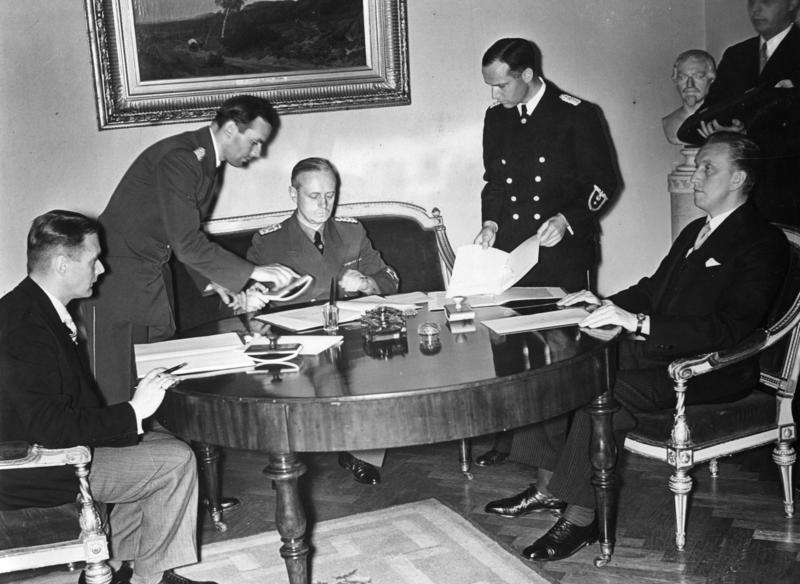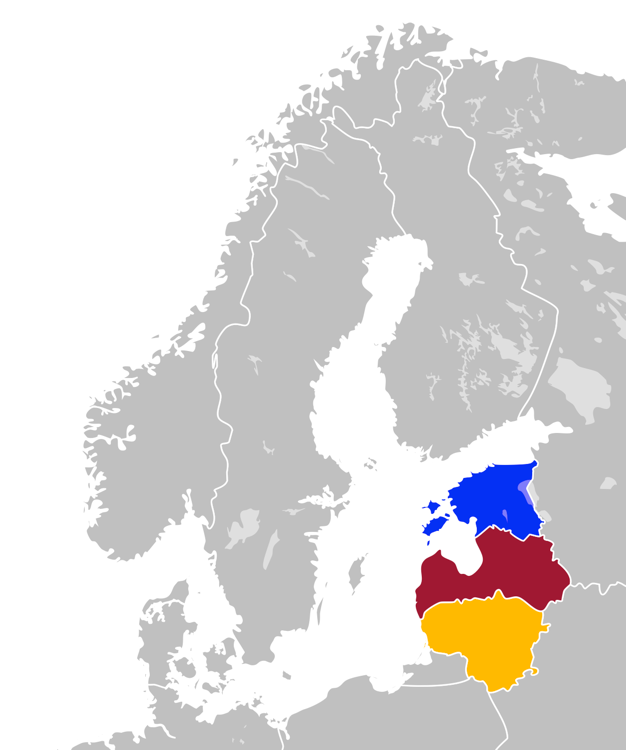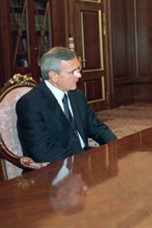|
Anatols Dinbergs
Anatols Dinbergs (, 1911 – November 9, 1993) was one of the preeminent career diplomats of Latvia. He entered service in Latvia's Foreign Ministry in 1932. Dinbergs remained abroad when the Soviet Union occupied Latvia, serving in the Latvian Legation in Washington, D.C., after World War II ended. Dinbergs assumed the highest diplomatic post, that of ''chargé d'affaires'', in 1970 and represented Latvia's sovereign interests in exile until Latvia reestablished its independence in 1991. As head of the Latvian diplomatic service abroad, Dinbergs was appointed Latvia's first ambassador to the United Nations and subsequently Latvia's first ambassador to the United States. After retirement, he served as Counselor to the Latvian Embassy in Washington, D.C., until his death in 1993. Background and career With the upheavals of the Latvian War of Independence, the Dinbergs family fled Latvia, living as refugees in Vitebsk from 1914-1918. [...More Info...] [...Related Items...] OR: [Wikipedia] [Google] [Baidu] |
Riga
Riga (; lv, Rīga , liv, Rīgõ) is the capital and largest city of Latvia and is home to 605,802 inhabitants which is a third of Latvia's population. The city lies on the Gulf of Riga at the mouth of the Daugava river where it meets the Baltic Sea. Riga's territory covers and lies above sea level, on a flat and sandy plain. Riga was founded in 1201 and is a former Hanseatic League member. Riga's historical centre is a UNESCO World Heritage Site, noted for its Art Nouveau/Jugendstil architecture and 19th century wooden architecture. Riga was the European Capital of Culture in 2014, along with Umeå in Sweden. Riga hosted the 2006 NATO Summit, the Eurovision Song Contest 2003, the 2006 IIHF Men's World Ice Hockey Championships, 2013 World Women's Curling Championship and the 2021 IIHF World Championship. It is home to the European Union's office of European Regulators for Electronic Communications (BEREC). In 2017, it was named the European Region of Gastronomy. ... [...More Info...] [...Related Items...] OR: [Wikipedia] [Google] [Baidu] |
Soviet Occupation Of Latvia In 1940
The Soviet occupation of Latvia in 1940 refers to the military occupation of the Republic of Latvia by the Soviet Union under the provisions of the 1939 Molotov–Ribbentrop Pact with Nazi Germany and its Secret Additional Protocol signed in August 1939. The occupation took place according to the European Court of Human Rights, European Court of Human Rights cases on Occupation of Baltic States the Government of Latvia,The Occupation of Latvia at Ministry of Foreign Affairs of the Republic of Latvia the , [...More Info...] [...Related Items...] OR: [Wikipedia] [Google] [Baidu] |
United Nations
The United Nations (UN) is an intergovernmental organization whose stated purposes are to maintain international peace and security, develop friendly relations among nations, achieve international cooperation, and be a centre for harmonizing the actions of nations. It is the world's largest and most familiar international organization. The UN is headquartered on international territory in New York City, and has other main offices in Geneva, Nairobi, Vienna, and The Hague (home to the International Court of Justice). The UN was established after World War II with the aim of preventing future world wars, succeeding the League of Nations, which was characterized as ineffective. On 25 April 1945, 50 governments met in San Francisco for a conference and started drafting the UN Charter, which was adopted on 25 June 1945 and took effect on 24 October 1945, when the UN began operations. Pursuant to the Charter, the organization's objectives include maintaining internationa ... [...More Info...] [...Related Items...] OR: [Wikipedia] [Google] [Baidu] |
Anatolijs Gorbunovs
Anatolijs Gorbunovs, also known as Anatoly Valeryanovich Gorbunov ( rus, Анато́лий Валериа́нович Горбуно́в, born 10 February 1942, in Pilda parish, Ludza municipality, Latvia), is a Latvian politician who served as the Chairman of the Supreme Soviet during the final years of the Soviet regime in Latvia and as Chairman of the Supreme Council of Latvia during the first years after the country regained its independence. In the latter capacity he was effectively the acting head of state before the election of the Fifth Saeima in 1993. He continued to serve as the Speaker of the Saeima until 1995. Political career From 1974 to 1988, he held various positions in the Communist Party of Latvia, with his highest position being the Secretary of the Central Committee. Unlike many other Communist Party members in Latvia, Gorbunovs supported the Latvian independence movement. From 1988 to 1990 he was also Chairman of the Presidium of the Supreme Sov ... [...More Info...] [...Related Items...] OR: [Wikipedia] [Google] [Baidu] |
Baltic States
The Baltic states, et, Balti riigid or the Baltic countries is a geopolitical term, which currently is used to group three countries: Estonia, Latvia, and Lithuania. All three countries are members of NATO, the European Union, the Eurozone, and the OECD. The three sovereign states on the eastern coast of the Baltic Sea are sometimes referred to as the "Baltic nations", less often and in historical circumstances also as the "Baltic republics", the "Baltic lands", or simply the Baltics. All three Baltic countries are classified as high-income economies by the World Bank and maintain a very high Human Development Index. The three governments engage in intergovernmental and parliamentary cooperation. There is also frequent cooperation in foreign and security policy, defence, energy, and transportation. The term "Baltic states" ("countries", "nations", or similar) cannot be used unambiguously in the context of cultural areas, national identity, or language. While the majori ... [...More Info...] [...Related Items...] OR: [Wikipedia] [Google] [Baidu] |
Jānis Jurkāns
Jānis Jurkāns (born 31 August 1946 in Riga, Latvian SSR) is a Latvian politician, one of the leaders of the Latvian Popular Front, who served as foreign minister (1990–1992). Biography Jānis Jurkāns was born in 1946 into a family with Polish-Latvian roots. In 1974 Jurkāns graduated from the Latvian State University, majoring in English. He worked as a lecturer from 1974 to 1978. In 1989 he became an activist of the Popular Front. Jurkāns was Minister of Foreign Affairs in Latvia, 1990–1992. In 1992, Janis Jurkāns, together with 9 other Baltic Ministers of Foreign Affairs and an EU commissioner, founded the Council of the Baltic Sea States (CBSS) and the EuroFaculty. He resigned in 1992 due to opposition to the Latvian citizenship law, that in his view threatened social harmony in the country; he also rejected territorial claims to the Abrene district. In 1994, Jurkāns founded the National Harmony Party and was the chairman of the party's faction in the Saeima (1 ... [...More Info...] [...Related Items...] OR: [Wikipedia] [Google] [Baidu] |
Ivars Godmanis
Ivars Godmanis (born 27 November 1951) is a Latvian politician who served as the Prime Minister of Latvia from 1990 to 1993 and again from 2007 to 2009. He was the first Prime Minister of Latvia after the country restored its independence from the Soviet Union. Political career Godmanis served as Prime Minister from 1990 to 1993, focusing primarily on Latvia's difficult economic transition from planned to market economy. In 1995 Godmanis was awarded with the Order of the Three Stars. He later served as the Minister of Finance from 1998 to 1999. He was originally associated with the Latvian Popular Front, but after the Front ceased to exist he moved to the Latvian Way party. In November 2006, following elections in which the Latvian Way in coalition with Latvia's First Party returned to Parliament, Godmanis became the Minister of the Interior. On 14 December 2007, Godmanis was nominated as Prime Minister by President Valdis Zatlers. He was approved by the parliament on 20 De ... [...More Info...] [...Related Items...] OR: [Wikipedia] [Google] [Baidu] |
On The Restoration Of Independence Of The Republic Of Latvia
The Declaration "On the Restoration of Independence of the Republic of Latvia" ( lv, Deklarācija par Latvijas Republikas neatkarības atjaunošanu) was adopted on 4 May 1990 by the Supreme Soviet of the Latvian SSR in which Latvia declared independence from the Soviet Union. The Declaration stated that, although Latvia had ''de facto'' lost its independence in 1940, when it was annexed by the Soviet Union, the country had ''de jure'' remained a sovereign country as the annexation had been unconstitutional and against the will of the Latvian people. It asserted the priority of the basics of the international law over the national laws and therefore it resolved that the Molotov–Ribbentrop Pact and the Soviet occupation of Latvia in 1940 were illegal. It also asserted that the heavily rigged 1940 elections were illegal and unconstitutional, and that all acts of the chosen at that election–including the request to join the Soviet Union on 21 July 1940–were ''ipso facto'' voi ... [...More Info...] [...Related Items...] OR: [Wikipedia] [Google] [Baidu] |
Latvian Popular Front
The Popular Front of Latvia ( lv, Latvijas Tautas fronte) was a political organisation in Latvia in the late 1980s and early 1990s which led Latvia to its independence from the Soviet Union. It was similar to the Popular Front of Estonia and the Sąjūdis movement in Lithuania. Its newspaper was '' Atmoda'' ("Awakening", cf. Latvian National Awakening), printed in the Latvian and Russian languages during 1989-1992. Historic background Latvia, Estonia and Lithuania were part of the Soviet Union since occupation and annexation in 1940 (with interlude between 1941 and 1945, when these territories were occupied by the Nazi Germany and Reichskommissariat Ostland was formed). In 1940, almost immediately an armed resistance started, which under the name of Forest Brothers continued until 1956. A chance to regain independence came in 1980s when Soviet general secretary Mikhail Gorbachev attempted to reform the Soviet Union. In particular, Gorbachev's ''glasnost'' policy allowed more ... [...More Info...] [...Related Items...] OR: [Wikipedia] [Google] [Baidu] |
Latvian SSR
The Latvian Soviet Socialist Republic (Latvian SSR), also known as Soviet Latvia or simply Latvia, was a federated republic within the Soviet Union, and formally one of its 16 (later 15) constituent republics. The Latvian Soviet Socialist Republic was in existence for 51 years, from August 5, 1940 to September, 6 1991. The Soviet annexation of Latvia took place in August of 1939 to the agreed terms of the Molotov–Ribbentrop Pact (Nazi-Soviet Nonaggression Pact). In 1939 Latvia was forced to grant military bases on its soil to the Soviet Union, and in 1940 the Soviet Red Army moved into Latvia, which was effectively incorporated into the Soviet Union. The territory changed hands during World War II with Nazi Germany occupying a large portion of Latvian territory from 1941 to 1944. Soviet instability and the dissolution of the Soviet Union provided the impetus for Latvia to regain independence. Creation, 1940 On 24 September 1939, the ... [...More Info...] [...Related Items...] OR: [Wikipedia] [Google] [Baidu] |
Arnolds Spekke
Arnolds Spekke (or ''Arnolds Speke''; born 14 June 1887, Vecmuiža parish, Russian Empire — died 27 July 1972, Washington, D.C., USA) received a doctorate in philology from the University of Latvia in 1927. In 1932 he received a Rockefeller Foundation scholarship and went studying in Poland and Italy. From 1933 to 1939 he was the Latvian envoy to Italy, Greece, Bulgaria and Albania with permanent residence in Rome, Italy. 27 July 1940, Spekke protested against the Soviet occupation of Latvia by handing over a note to the Italian government. 9 August 1940 Spekke handed over his resignation, 11 August 1940 was his last working day at the Latvian Legation in Rome. Afterwards he worked as a teacher, librarian, translator and other odd jobs in Milan and Rome. From 1945 to 1950 Spekke worked for the Latvian Committee in Rome and 1951 he attended the founding meeting of the Latvian Liberation Committee ( lv, Latvijas Atbrīvošanas komiteja). In 1951 Spekke published his ''History of ... [...More Info...] [...Related Items...] OR: [Wikipedia] [Google] [Baidu] |
Georgetown University
Georgetown University is a private university, private research university in the Georgetown (Washington, D.C.), Georgetown neighborhood of Washington, D.C. Founded by Bishop John Carroll (archbishop of Baltimore), John Carroll in 1789 as Georgetown College (Georgetown University), Georgetown College, the university has grown to comprise eleven Undergraduate education, undergraduate and Postgraduate education, graduate schools, including the School of Foreign Service, Walsh School of Foreign Service, McDonough School of Business, Georgetown University School of Medicine, Medical School, Georgetown University Law Center, Law School, and a Georgetown University in Qatar, campus in Qatar. The school's main campus, on a hill above the Potomac River, is identifiable by its flagship Healy Hall, a National Historic Landmark. The school was founded by and is affiliated with the Society of Jesus, and is the oldest Catholic institution of higher education in the United States, though the m ... [...More Info...] [...Related Items...] OR: [Wikipedia] [Google] [Baidu] |





.jpg)
